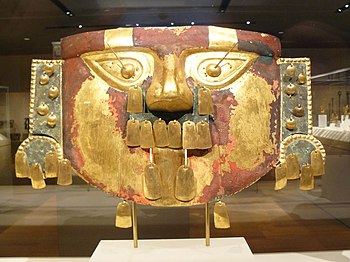Third level of meaning: Context
| Art Appreciation and Techniques (#ART100) | |
|---|---|
| How art speaks: Finding meaning | Overview | Introduction | How we see | First level of meaning: Formal | Second level of meaning: Subject | Third level of meaning: Context | Fourth level of meaning: Iconography | Critical perspectives | Summary |
The decorative arts have meaning too, primarily in the functionality of the art works themselves, but also in the style and decorations afforded them. A goblet from the 17th century has an aesthetic meaning in its organic form, in its function as a means to hold and dispense liquid, and a particular historical meaning in the way it is embellished with diamond point engravings that depict the flow of the river Rhine (click ‘Fullscreen’ at the bottom of the image, and use the '+' tool to see the goblet in detail). The goblet’s detailed map of the Rhine gives it specific context: the historical, religious or social issues surrounding a work of art.
For the Sican people the mask represented either the Sican deity from the spiritual world or the lord of Sican, a man who represented the deity in the natural world. Masks were stacked at the feet of the dead lord in his tomb. In this cultural context the masks had significance in the life, death and spiritual worlds of the Sican people.
To view James Rosenquist’s painting F-111 is to be confronted with a huge image of a fighter jet overlaid with images from popular culture, all in bright colors and seemingly without connection.
- Full-scale view on exhibit at The Museum of Modern Art
- Section one - rear
- Section two - mid-rear
- Section three - mid-front
- Section four - front
But when we see the work in the context of American experience in the 1960’s we realize the two-pronged visual comment Rosenquist is making about war and consumerism; what he termed “a lack of ethical responsibility”.[1] In the artist’s hands the two ideas literally overlap each other: the salon hair dryer and diver’s bubbles mimic the mushroom cloud rising behind the opened umbrella (which is another formal link to the nuclear bomb blast behind it). The painting is at such a large scale that viewers are dwarfed by its overpowering presence.
Notes
- ↑ Rosenquist, James (2009). Painting Below Zero: Notes on a Life in Art. Alfred A. Knopf. page 154.
